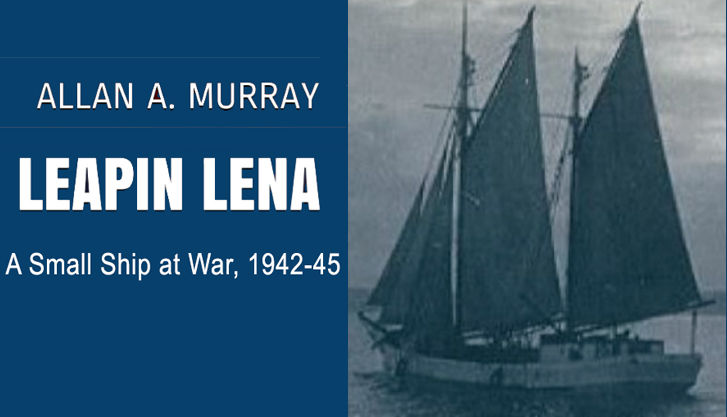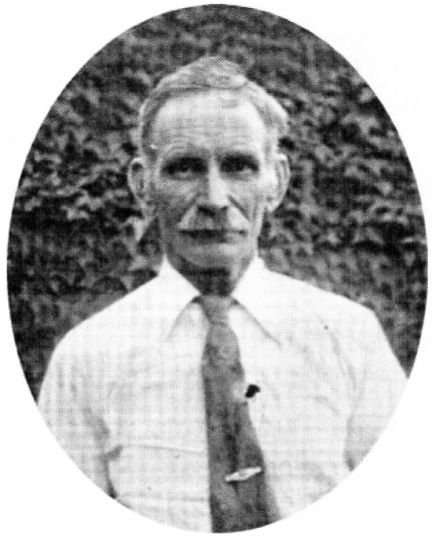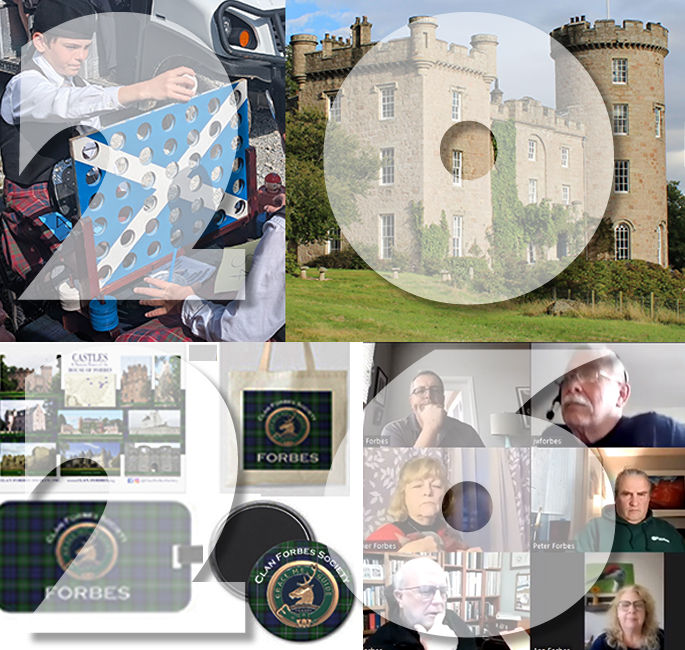From "Forbes Brothers" to "Leapin Lena:" A Small Ship at War
- Bart Forbes

- Sep 26, 2025
- 6 min read

The book Leapin Lena: A Small Ship at War, 1942–45 (Murson Holdings Pty Ltd, 2020), chronicles the remarkable life of the ketch Forbes Brothers, built in 1912 by John Ernest Forbes and his brothers on Lake Macquarie, New South Wales. Originally a sail-powered vessel used in South Australia's Spencer Gulf, she was later renamed Leprena and nicknamed "Leapin Lena." The ship served with the United States Army Small Ships Section during World War II, supporting operations in New Guinea against Japanese forces.
The narrative blends maritime history with family legacy, tracing the Forbes family's deep roots in Australian coastal shipping from the mid-19th century. It highlights William Brown Forbes’ arrival from Scotland, his sons’ careers as mariners and shipbuilders, and the family's enduring connection to the sea. The book also explores the vessel’s wartime service, including encounters with HMAS Australia (II) and recollections from crew members like Clarrie Dawes.
Through photographs, interviews, and historical records, Murray offers a vivid portrait of a small ship that played a quiet but vital role in Australia’s wartime efforts—while honoring generations of Forbes mariners whose lives revolved around the ocean.
Here is the introduction to the book, which provides the background of the family behind the Forbes Brothers.
Over generations, the Forbes family forged a strong maritime heritage, associated particularly with coastal shipping in and around Newcastle, New South Wales (NSW). The Forbes family name came to Australia from Scotland through William Brown Forbes. Lyn Forbes (daughter of John Frederick Forbes) advised ...
. . . "His father was a flaxer and owned a flax mill."
By the 1850s, William Forbes was a Master Mariner (certificate number 165) living in Newcastle and employed in the coastal trade. With the big market of Sydney less than 100 kilometres to the south, there was a lucrative flow of trade - mainly coal, timber, and livestock - for smaller vessels to carry.
In June 1859, he married Ellen Butterfield at Sydney when his ship was lying over waiting to receive cargo. On their marriage certificate, William Forbes gave his address as 'on board ship'.
Soon after their marriage, William Forbes found employment as Harbour Pilot at Newcastle before buying a share firstly in the small ketch Lorra then another named Hope, both trading between Lake Macquarie and Sydney. In the rnid-1860s, the Forbes family settled in the Reid's Head (now Swansea Heads) area. William Forbes thought it more convenient to be living close to his work in Lake Macquarie rather than making the journey from his residence in Newcastle. By now, William and Ellen had three children - William James, Arthur, and Phillip Bean - who were born in Newcastle. After arrival at the Head, two more children were born; John Ernest and Helen Ann.
William Forbes was Master for a time of:
1867. The locally built 21. 7-tonne ketch Dora.
1871. The 13.6-tonneketch Turtle.
1873. The 10-tonne ketch Rose.
1876. The 21.7-tonne ketch Contest.
William Forbes had two incidents aboard the Contest. In the first, the ketch was stranded on a reef outside the entrance to Lake Macquarie. Thanks to William's outstanding seamanship, no lives were lost. In June 1879, the Contest was at the entrance to Lake Macquarie, and almost in sight of William's home, when it capsized. William and his two crew were able to get aboard the ketch's lifeboat. Unfortunately, while attempting to cross the bar the lifeboat was hit by a wave and swamped. A surveyor (Mr. Keel) camping nearby saw what happened and sent his whale boat out to pick them up. The three men were rescued and brought ashore. Regrettably, William Forbes, now aged in his 50s, died on 19 June.
A benefit fund of 45 Pounds, fourteen Shillings, and six Pence was raised for the widow and family. He was buried on the headland to Lake Macquarie on the plateau of a sandhill. Two inscribed stones marked the site.
Each of William Forbes' first three sons was involved in the coastal trade. The eldest, William James 'Bill' Forbes, became a seaman at an early age. Second son, Arthur, qualified as a Master Mariner in both Harbours and Rivers (certificate number 404) and for coast trade ships (certificate number 745) in 1887. Arthur never married and died in an unfortunate collision with a ferry on Sydney Harbour in 1898.

Third son, Phillip Bean Forbes, also began life at sea early. His real ambition was in the building of ships rather than sailing them. Lyn Forbes provides a clue ...
. . . "John Taafe, Bill Forbes, and William Donnelly (believed to be Bill's brother-in-law), were charged with wilful damage to a boat, fishing net, and sail, the said property of C. McPherson at Lake Macquarie, and were discharged on a technicality. It wasn't a deliberate act but used in a rescue of some sort."
Following the death of his father, Phillip Bean Forbes initiated a shift in focus to the building of vessels. He convinced older brother, Bill Forbes, to partner with him. They designed and had built several fine vessels at Swansea, including:
1892. The 18-tonne ketch Edith and May to carry coal.
1899. The 25.1-metre, 79-tonne coal transporter Phil Forbes.
Edith and May was named after the two oldest daughters of Bill Forbes. The precedence was set whereby Phillip gave his vessels names with a family connection.
The Newcastle Morning Herald described the launching of a new ketch as follows
... "on Saturday last was launched at Messrs Murray Bros. Swansea the new ketch Phil Forbes (Registered Sydney 27 / 1899). The occasion brought together about 300 people to witness the launch ... Mrs. J. Murray performed the christening ceremony ...
"Built to a design by Mr. Phil Forbes, a native of Swansea after whom the vessel is named ... altogether the vessel does great credit to Mr. Forbes."
Forbes Street, Swansea was named in 1940 for the Forbes brothers Bill and Phillip.

Youngest brother, John Ernest Forbes, went to sea much later in life than his brothers. In 1895, he married Isabella Eliza Farinden at Swansea. Isabella was the daughter of Master Mariner, Henry Faiinden. They had four children - Arthur Ernest (much loved great-grandfather of the author), John Henry, Claude P. B. and William Edwin.
John stuck with sailing; he owned the ketch, Therese in 1899. John qualified as a Master Mariner in the coast trade in October 1901 (certificate number 785) and was part owner of the ketch, Laura, in 1904. But the attraction to ship building was there for him as well. John is credited with building the 9-tonne ketch, Frolic.
Eventually, John joined with his older brothers. In 1912, all three worked together to build the ketch, Forbes Brothers, for their sister, Helen Ann Ward. Forbes Brothers is the subject of this book.
Electoral rolls listed John Ernest Forbes as a Master Mariner in 1930, 1936, 1937 living in Tea Gardens with Isabella. Lyn Forbes recalled ...
... "My Dad, John Frederick Forbes (a son of John Henry Forbes), ... talked often of his young carefree days living in Swansea and Tea Gardens, and their life revolving around the sea."
... "Dad remembered going on the boat of his grandfather, John Ernest Forbes, as a small child when it was moored at Tea Gardens."
... "Mum always said that the water was in the bones of the Forbes men (from John Ernest down), as they all had a restlessness about them. Dad was always drawn to the sea, and it was nothing for us to head to the beach for the day from Armidale - 3 ½ hours each way, and much of it a dirt road. And it was even more special if Dad went swimming, as he would let me swim out in deep water with him."

Isabella died on 17 January 1938. In 1947, John Ernest Forbes was living at 2 Islington Street, Islington with son, Arthur Ernest and his wife, Ellen Forbes.
Arthur Ernest Forbes was born in 1895. Arthur Ernest worked for the D&H Munitions Annexe during World War I sailing on ships carrying ammunition around the Port of Newcastle. After the War, he had two sons, Robert Ernest 'Bobby' Forbes and Arthur Alan 'Dukesy' Forbes. Both served in the Australian Navy during World War II (two of the protagonists of this Series).
Arthur Ernest Forbes became a Master Mariner and in the 1950s Captained the punts, or car ferries, that sailed between Newcastle and Stockton across the Hunter River. When the Stockton Bridge opened on 1 November 1971, replacing the punts, Arthur Ernest Forbes was among the invited guests.




Comments